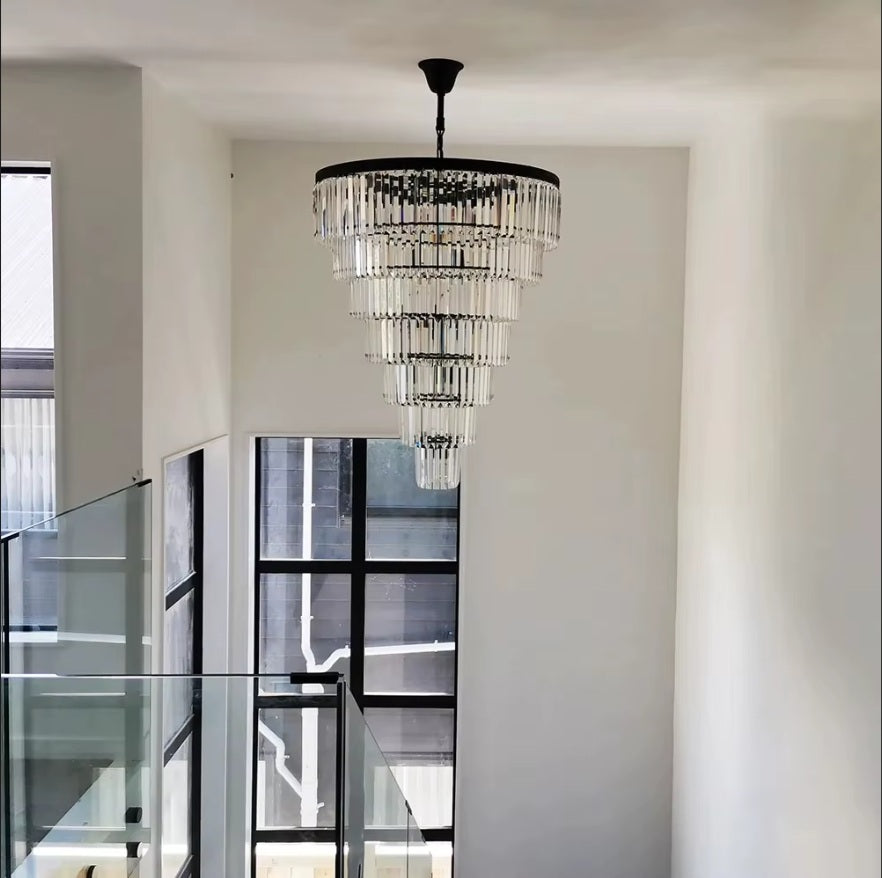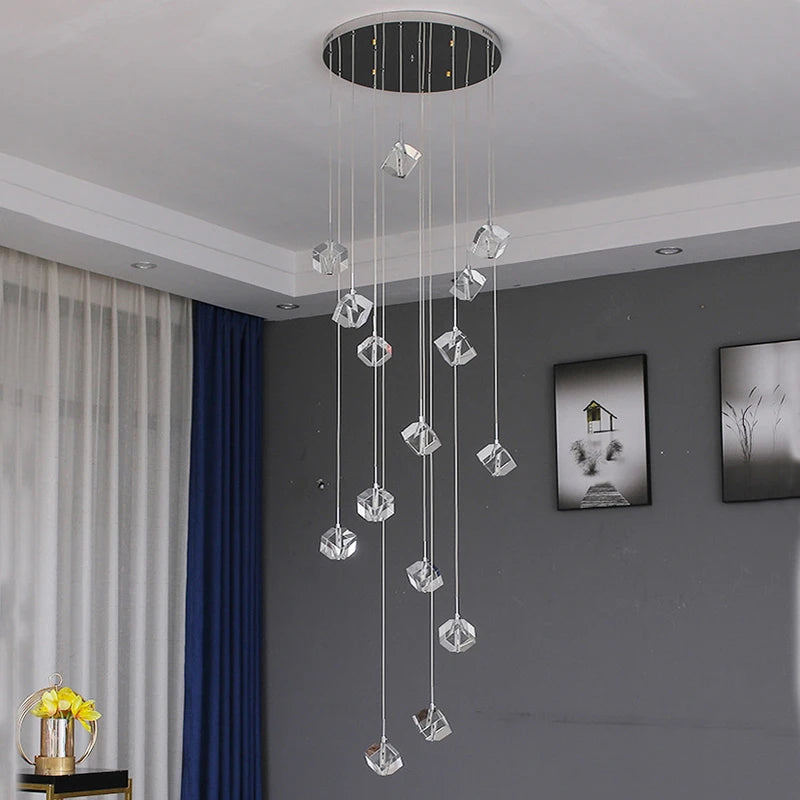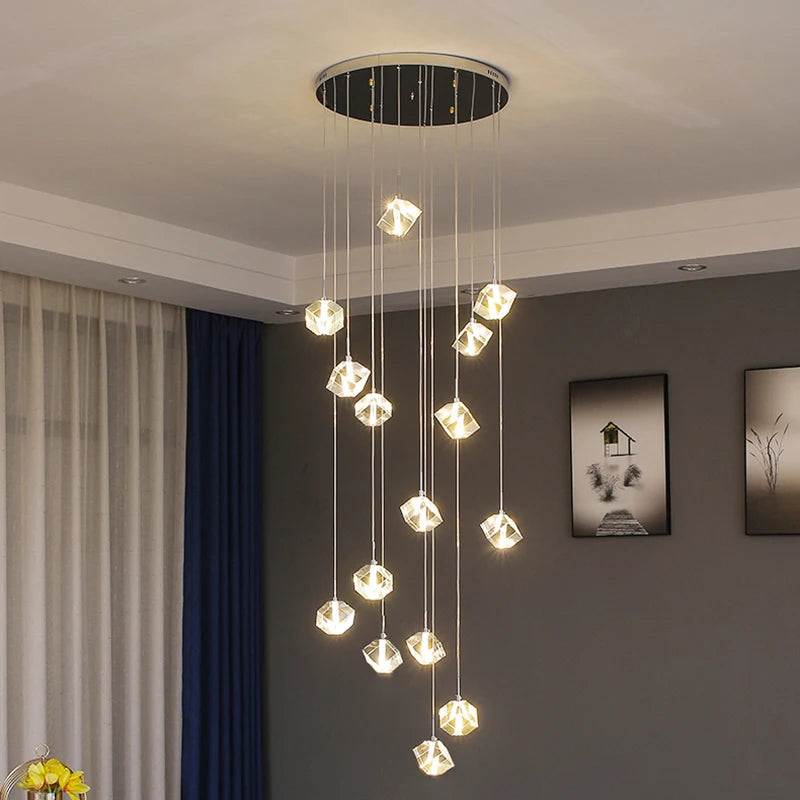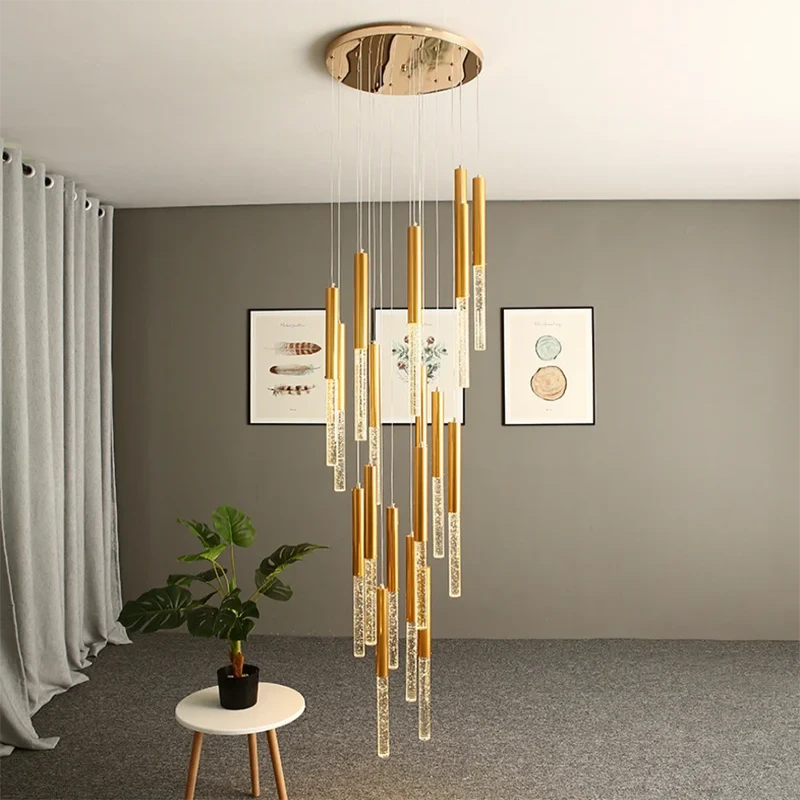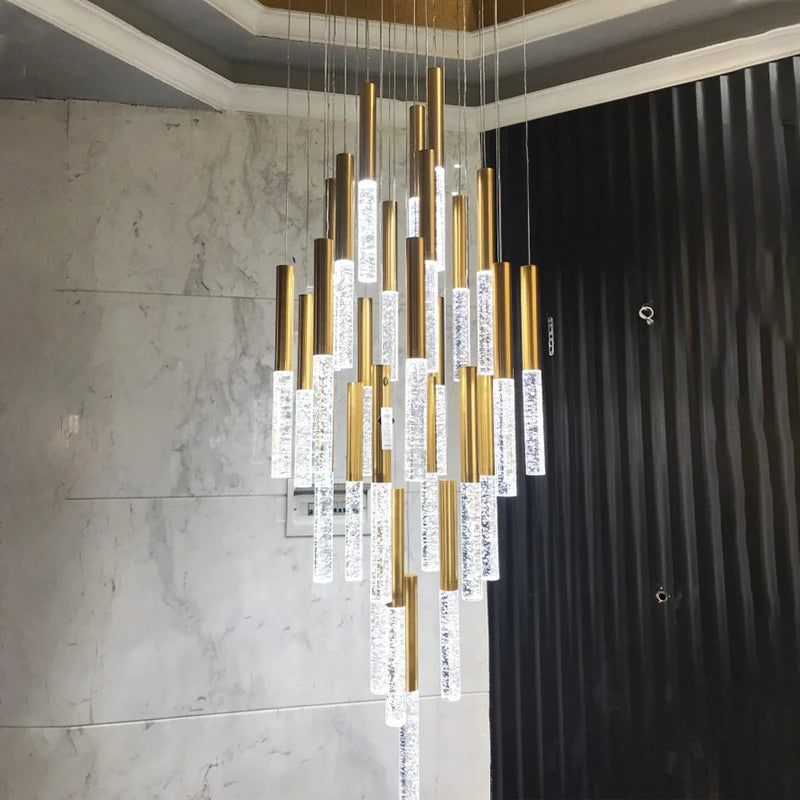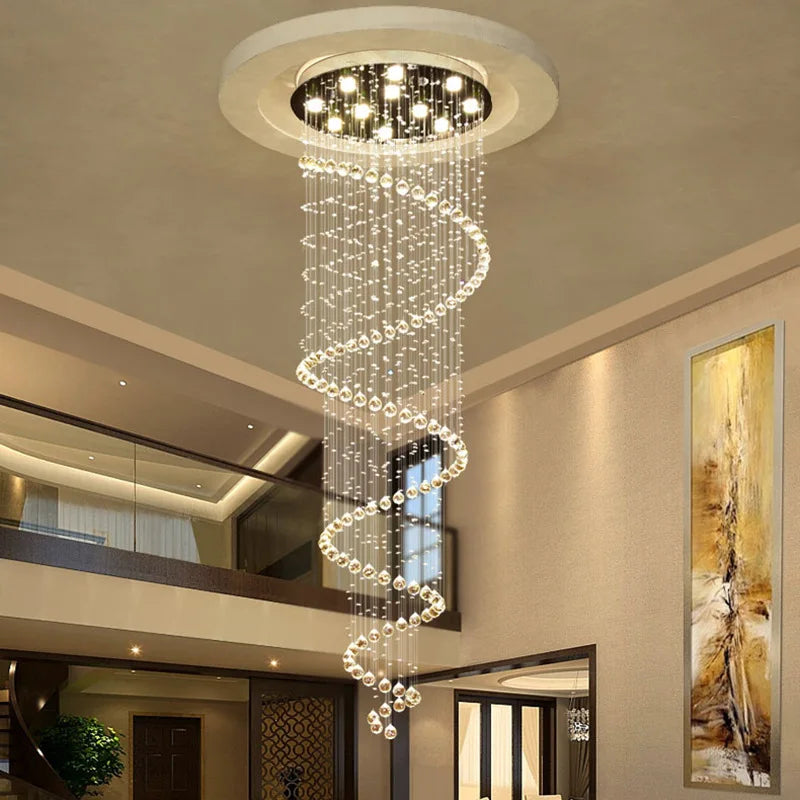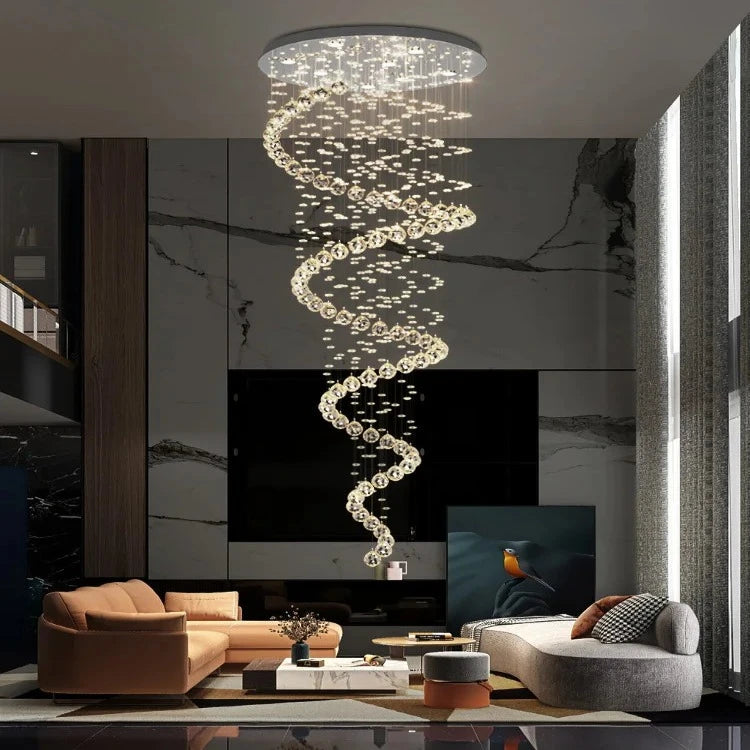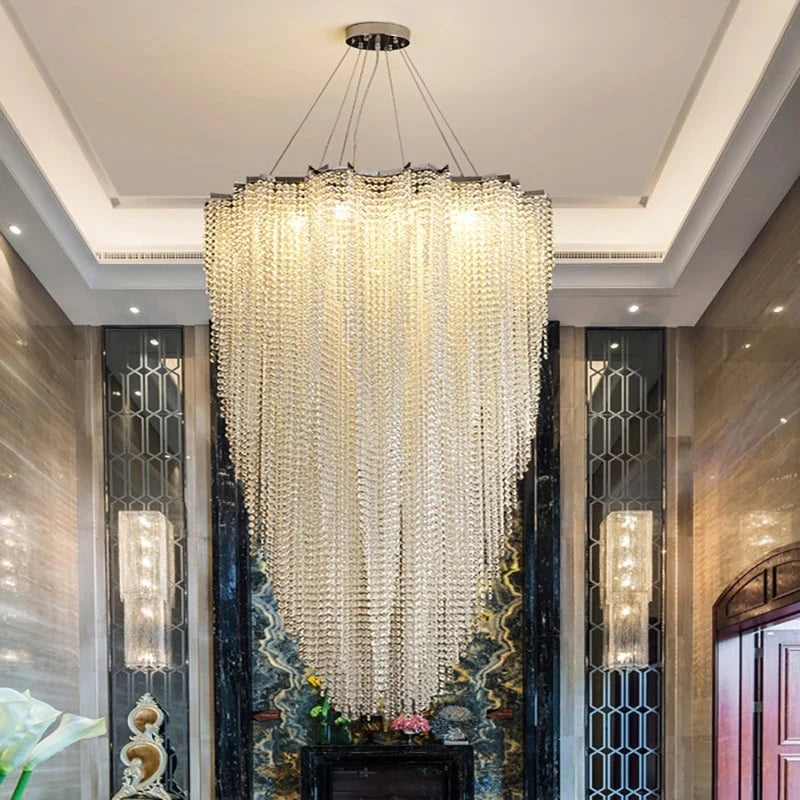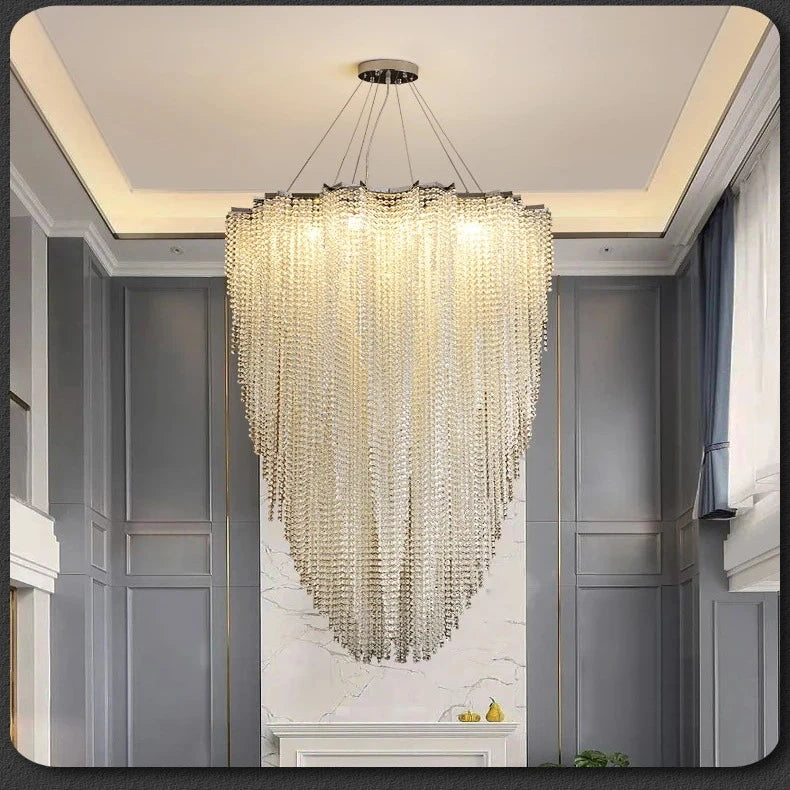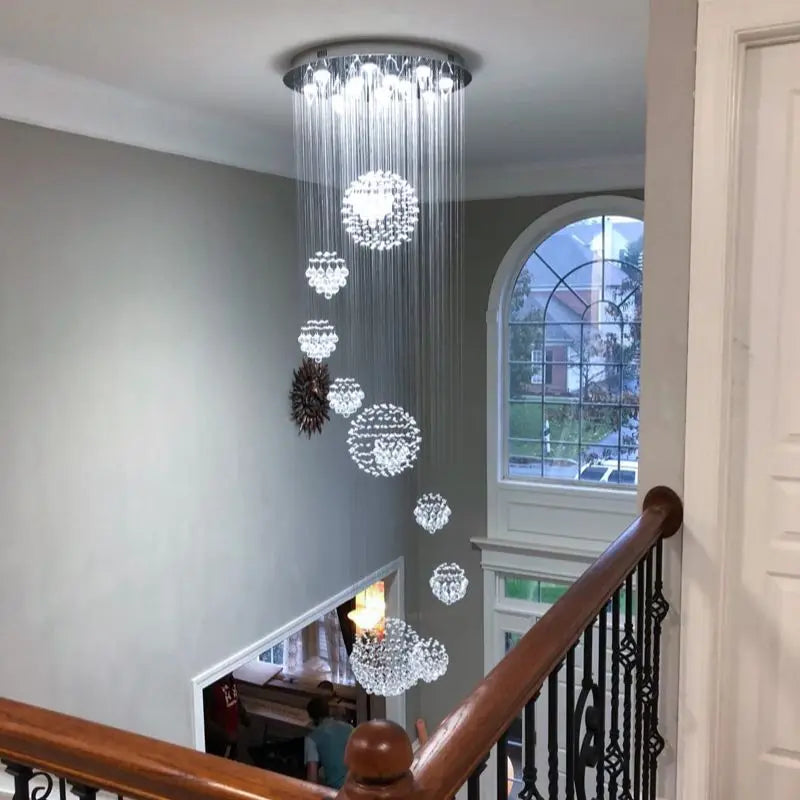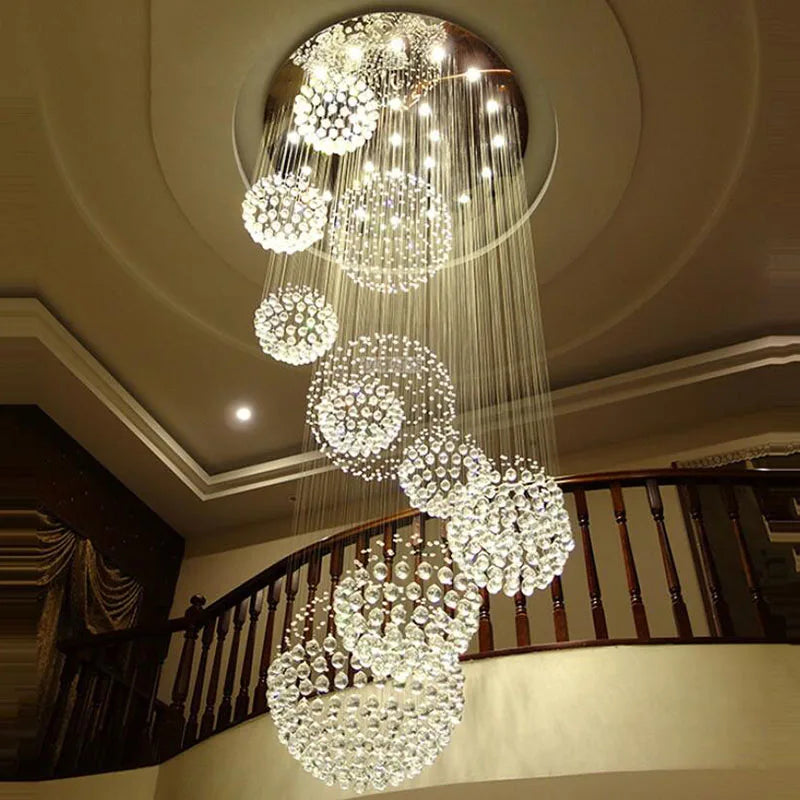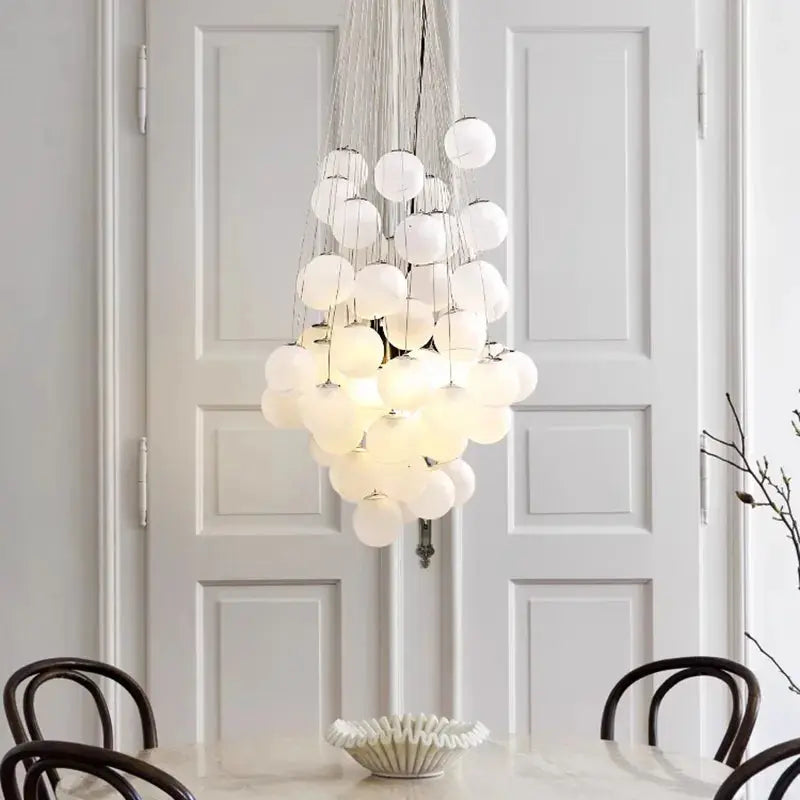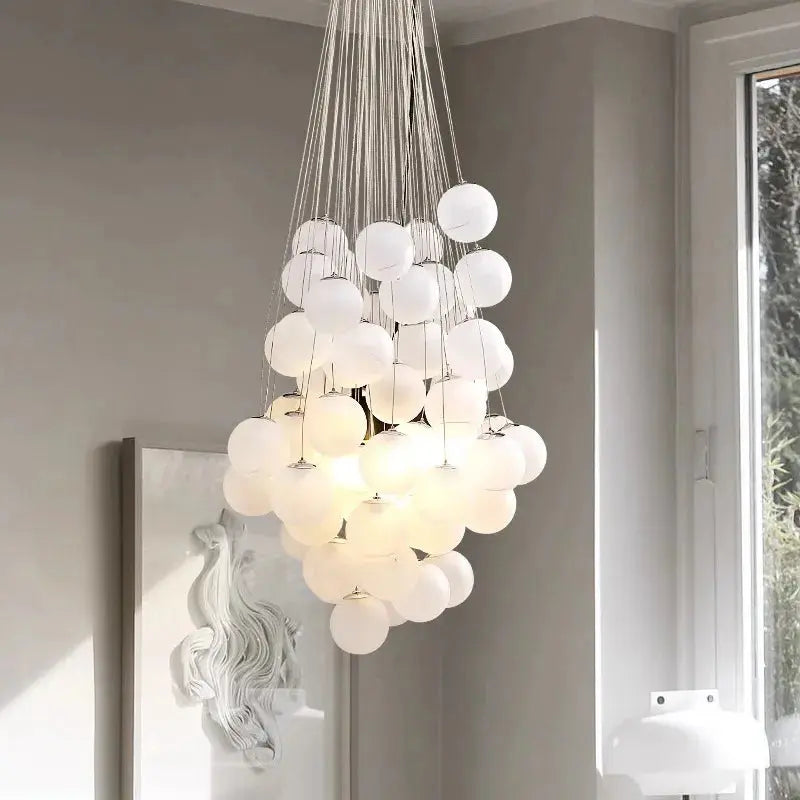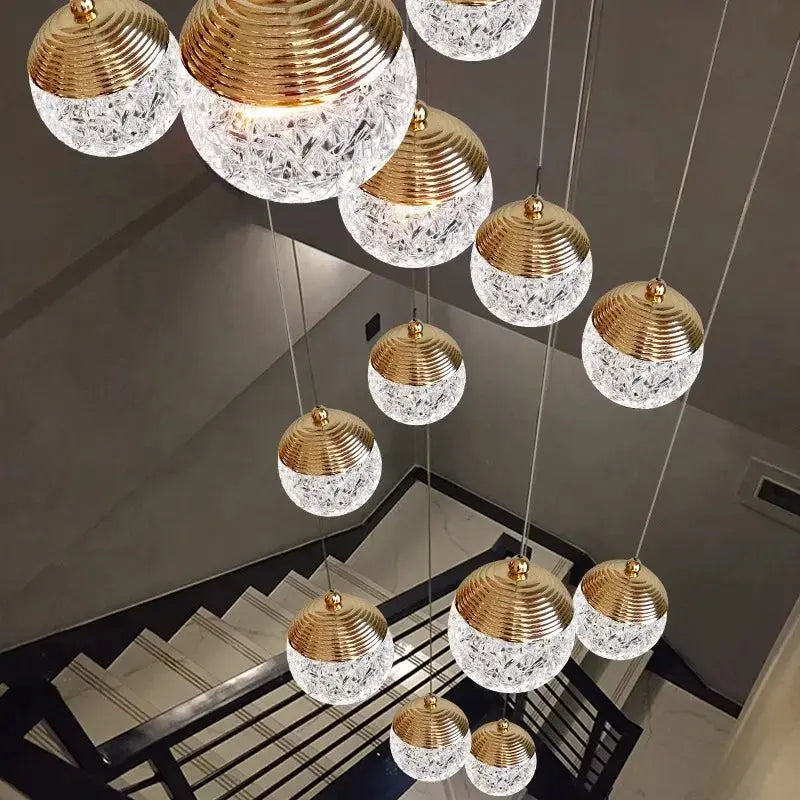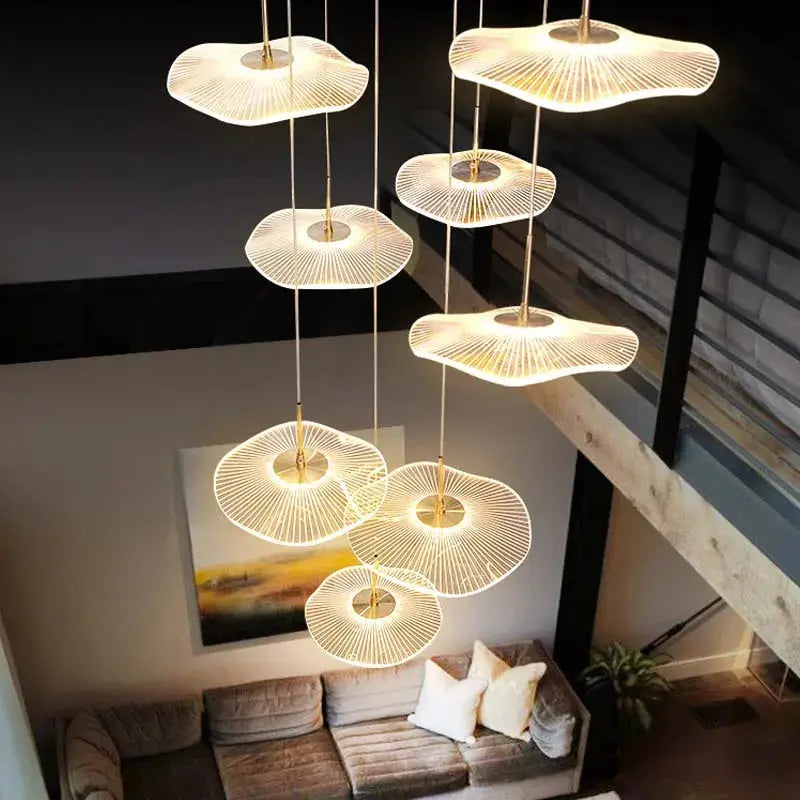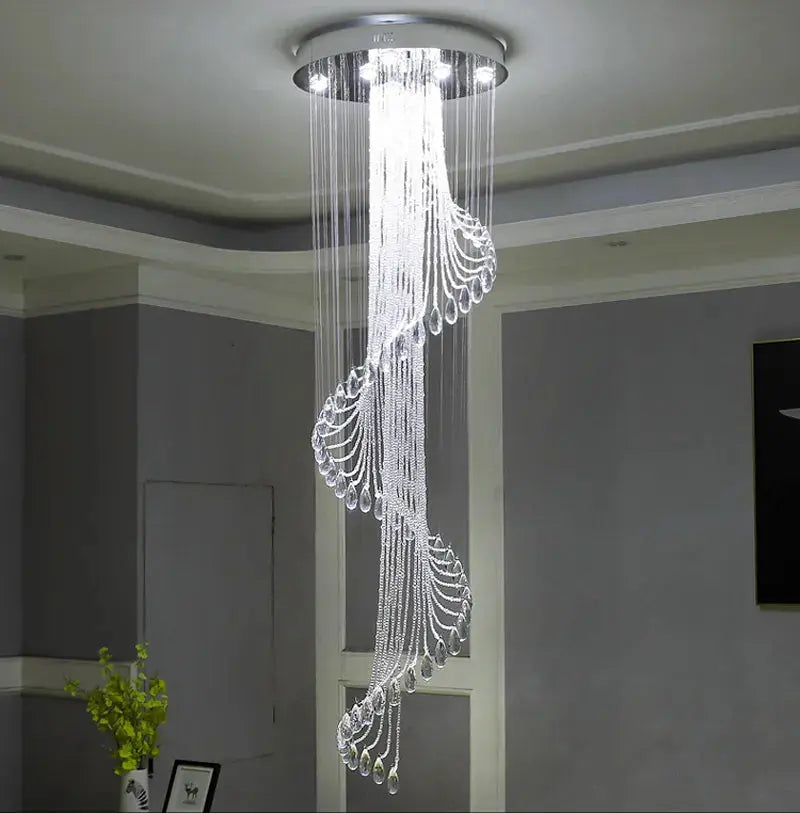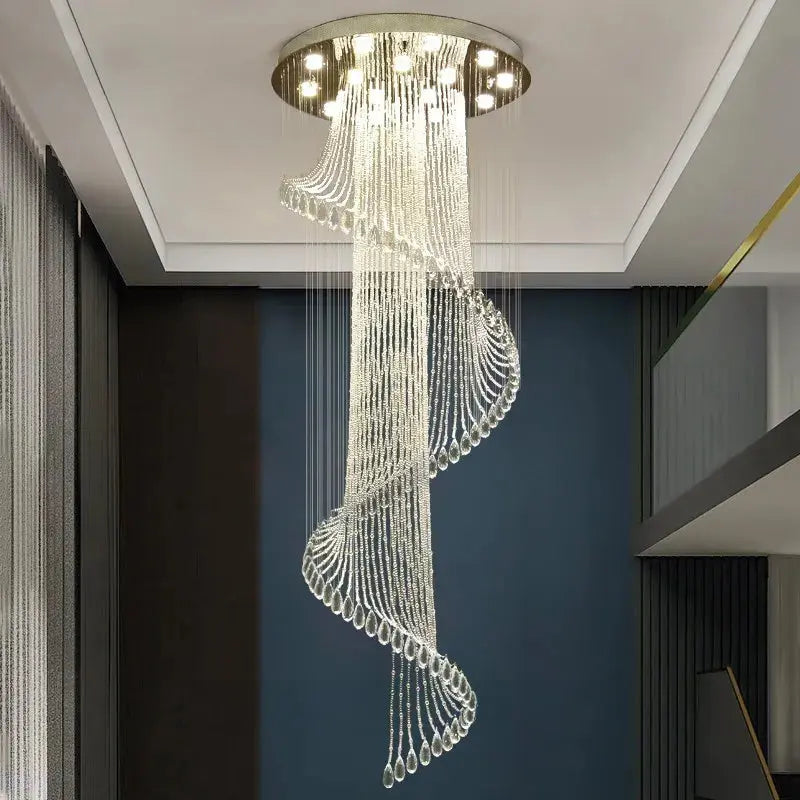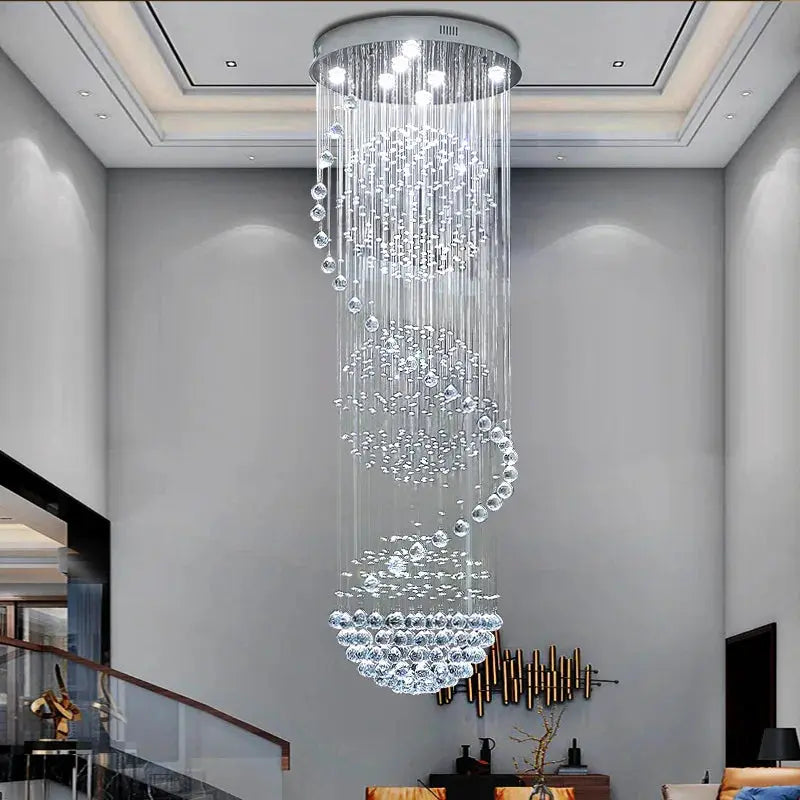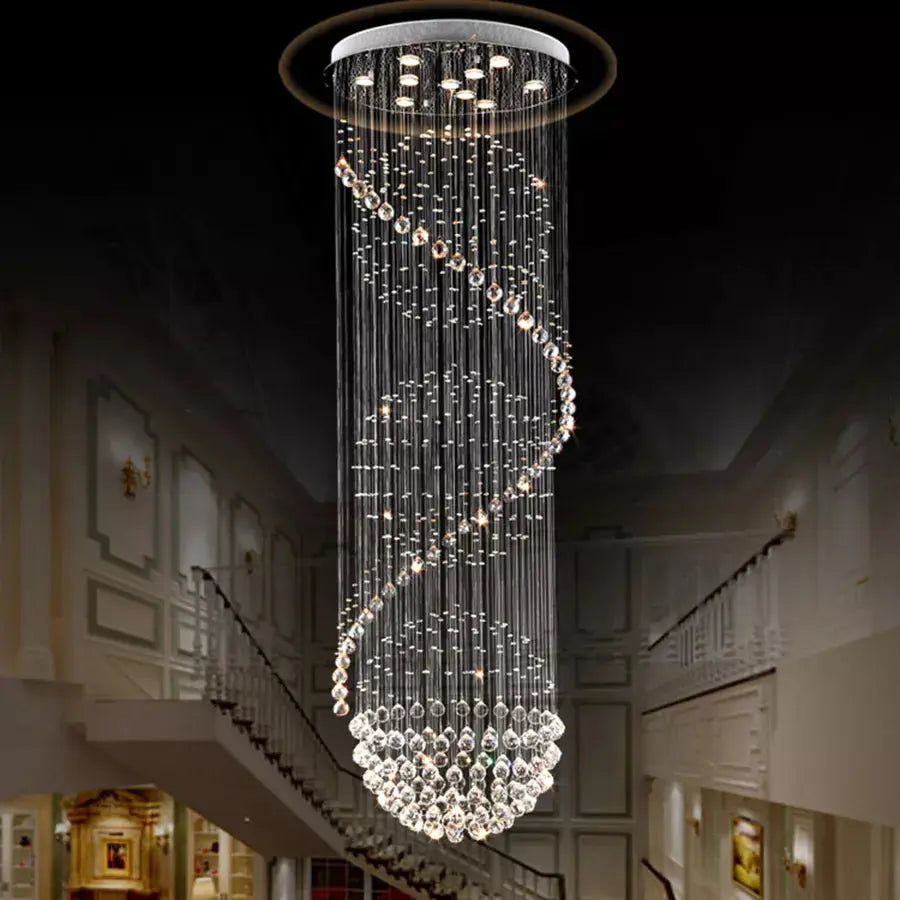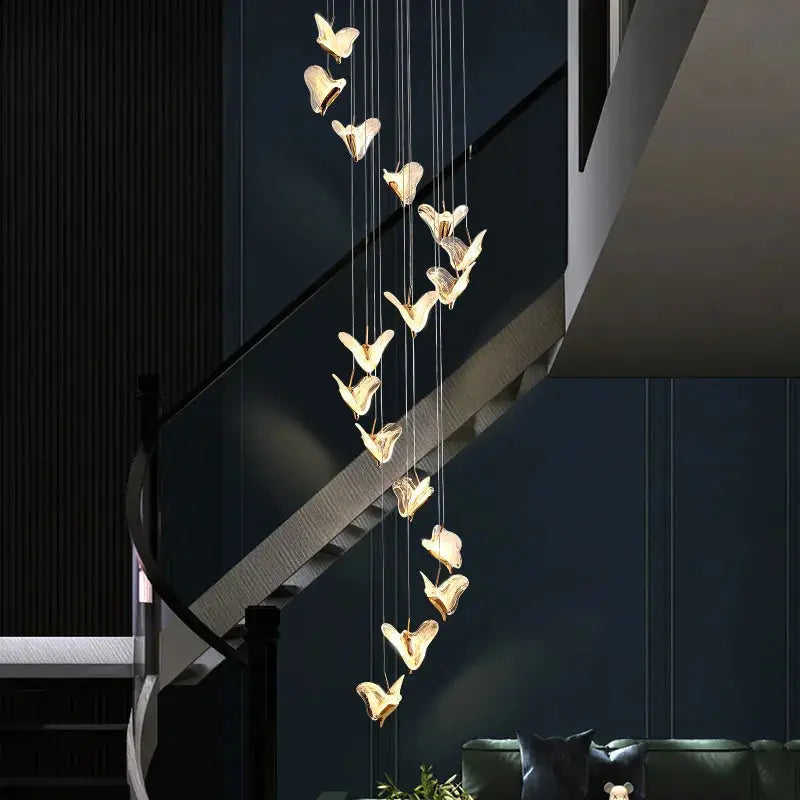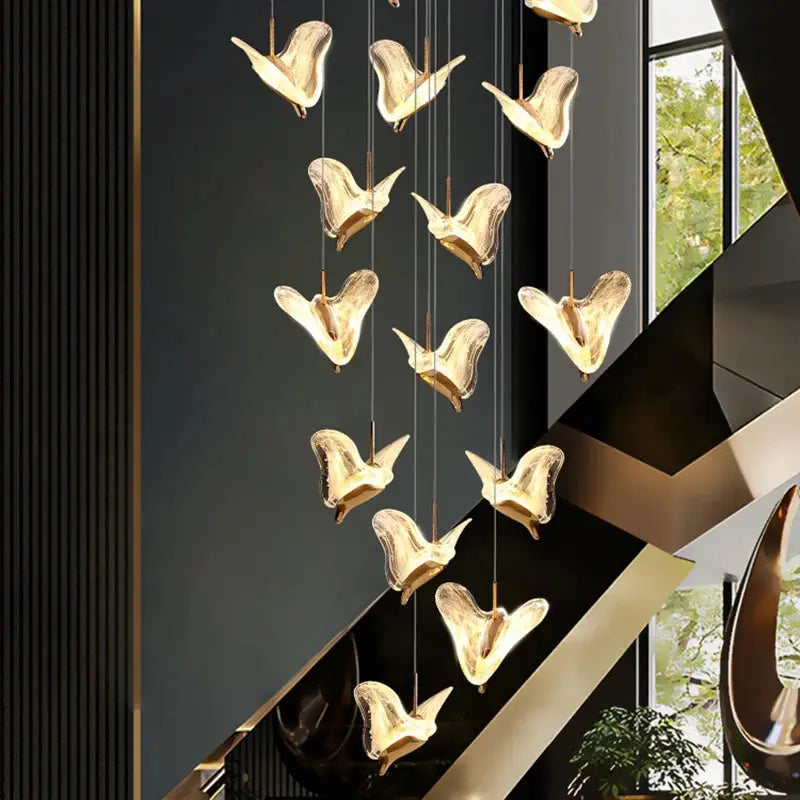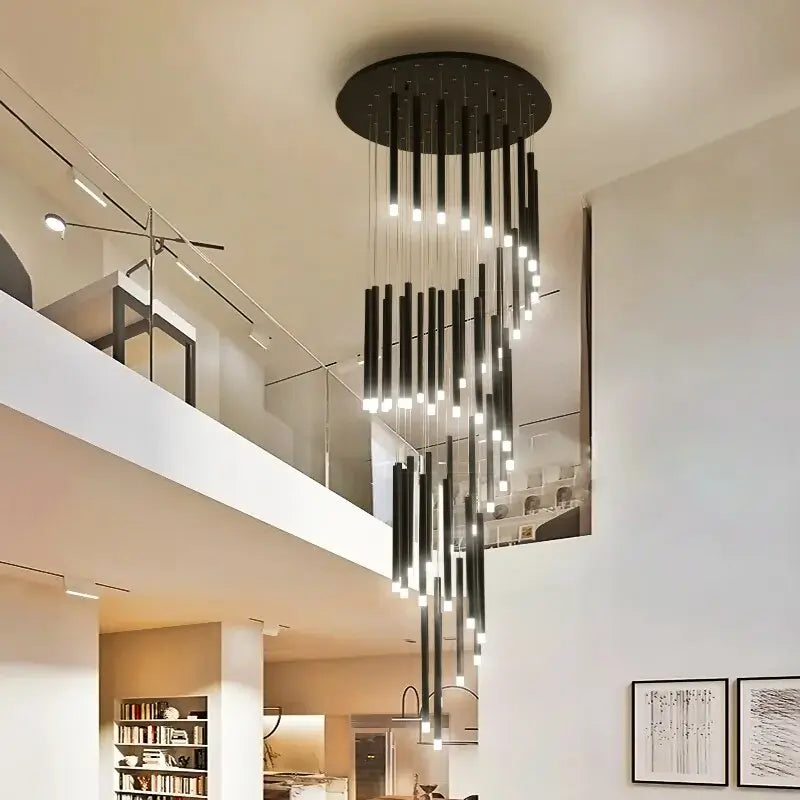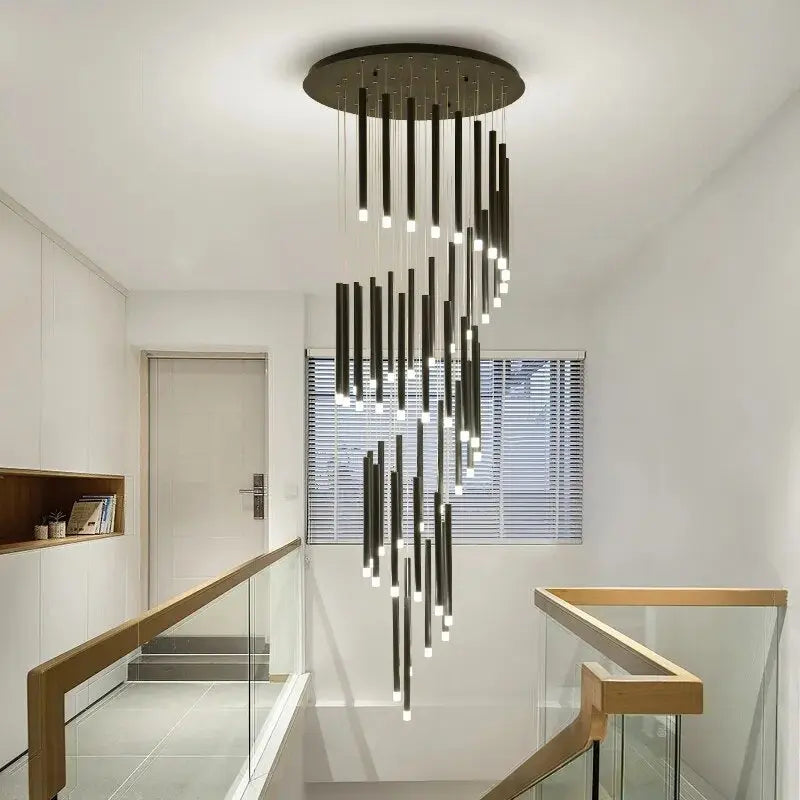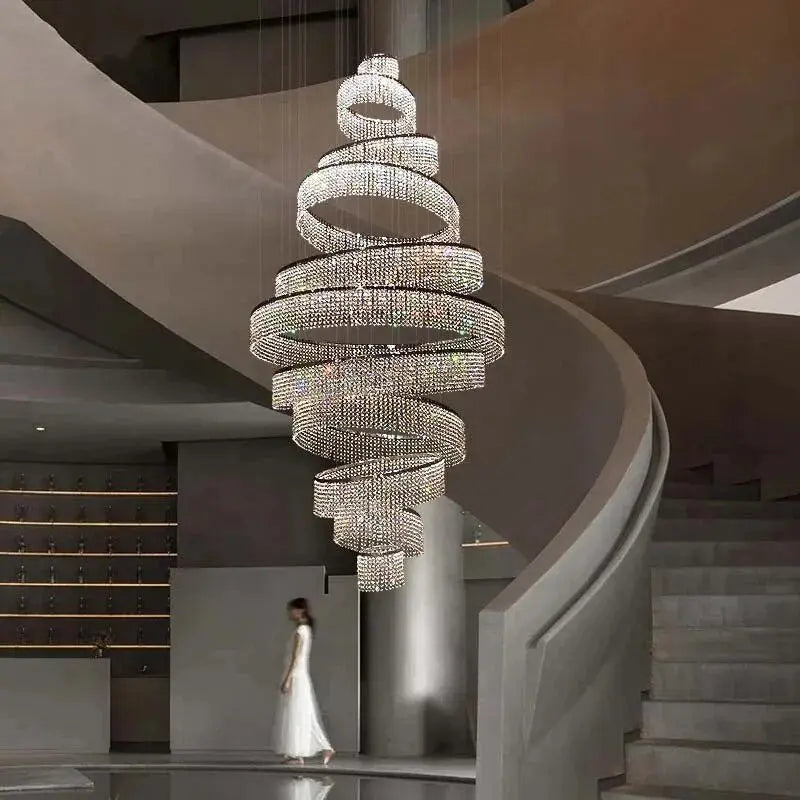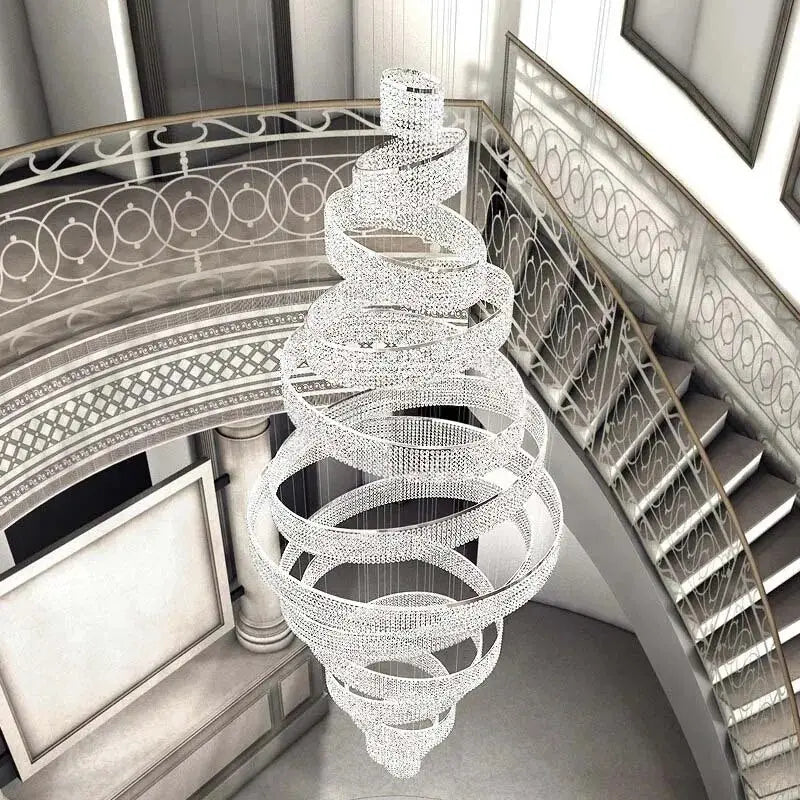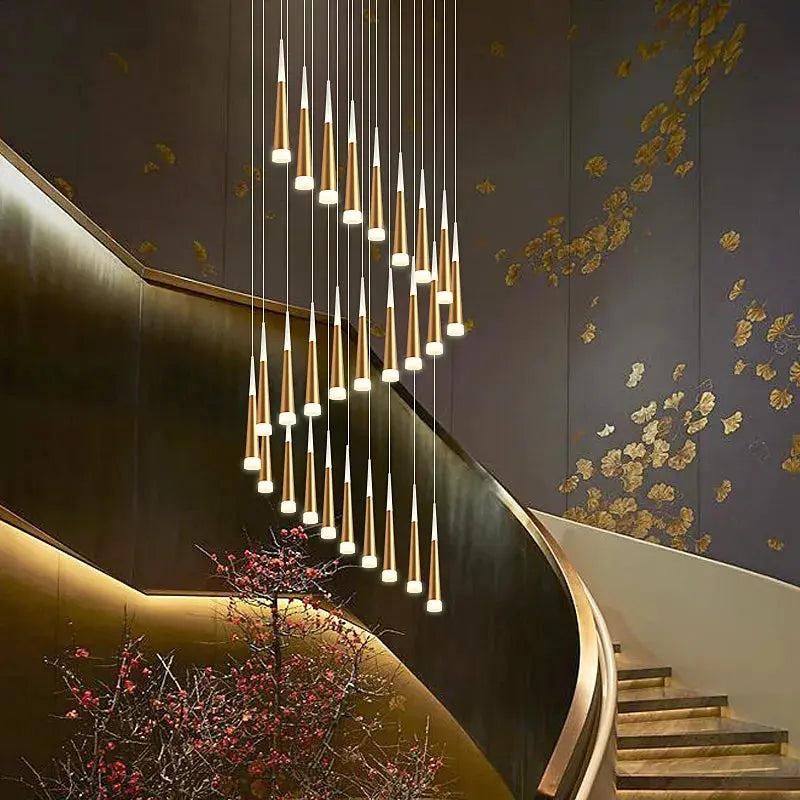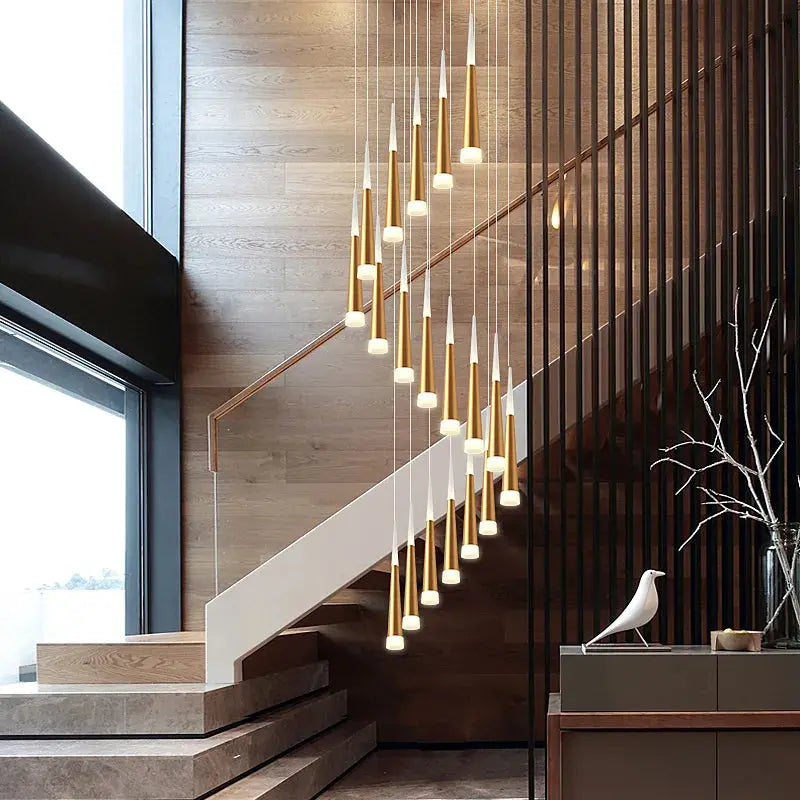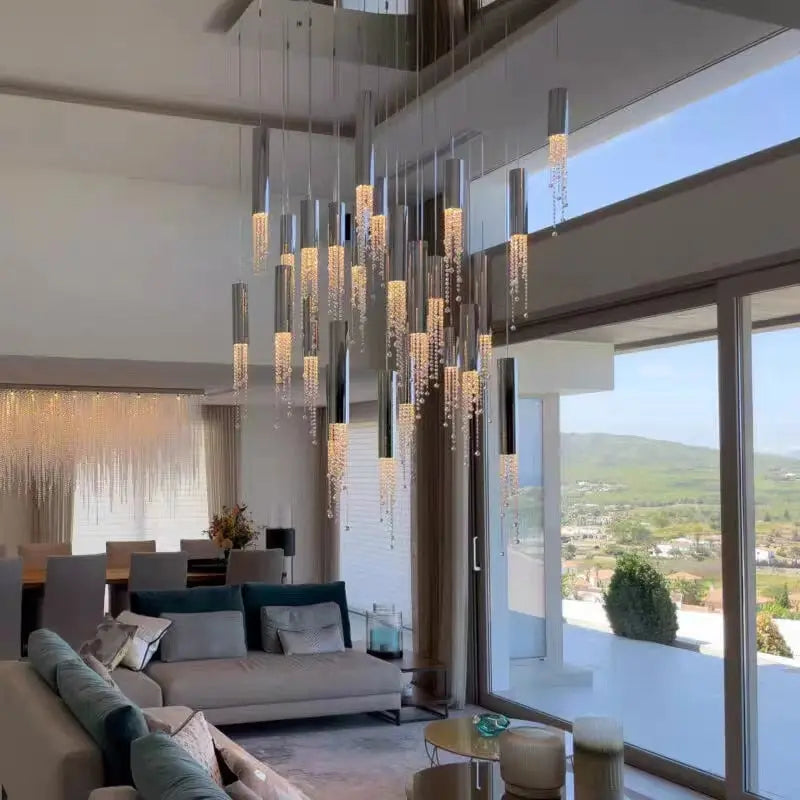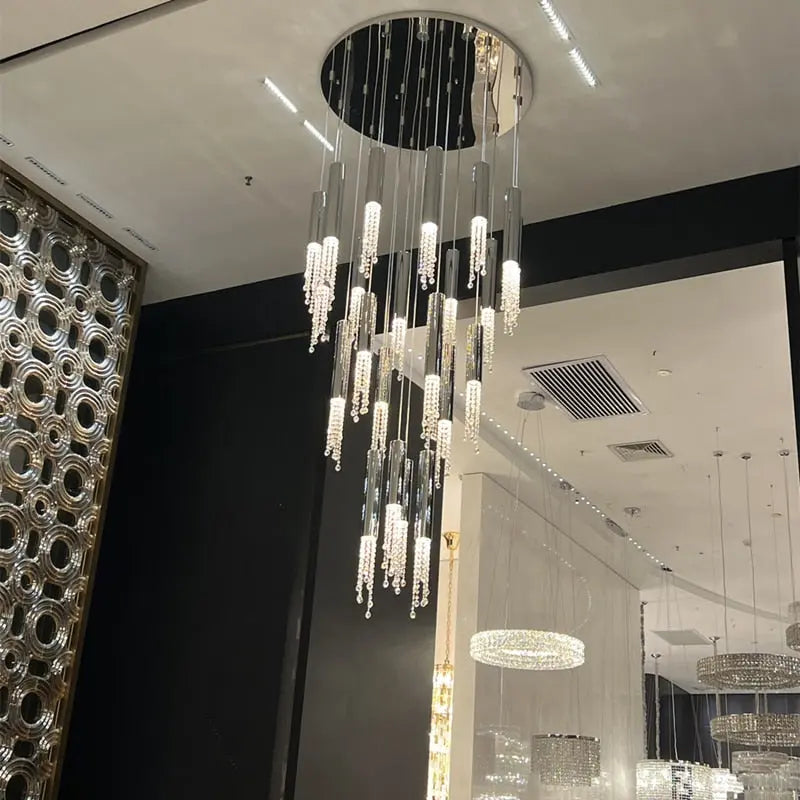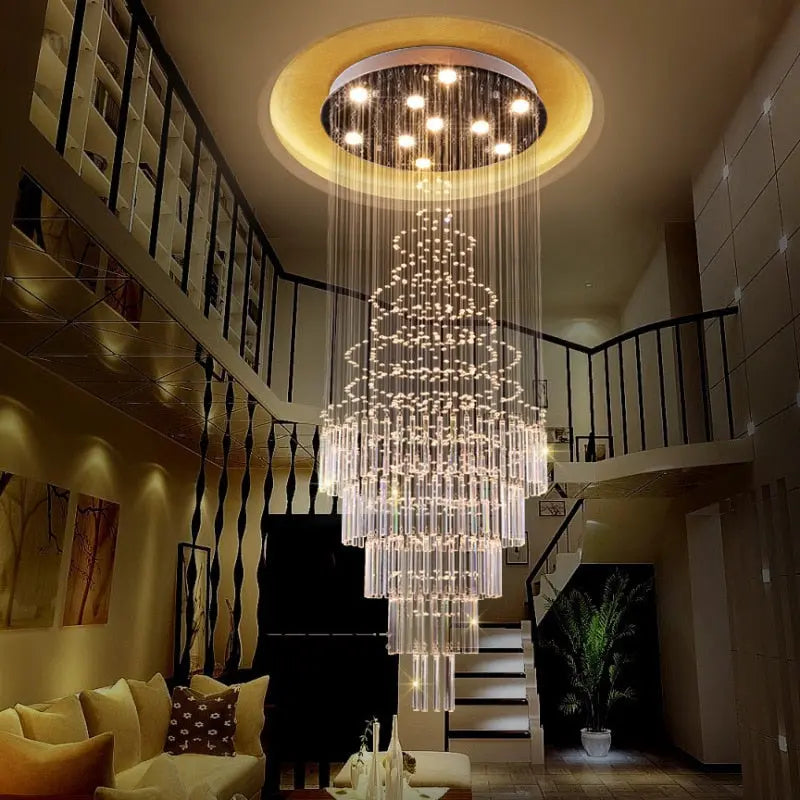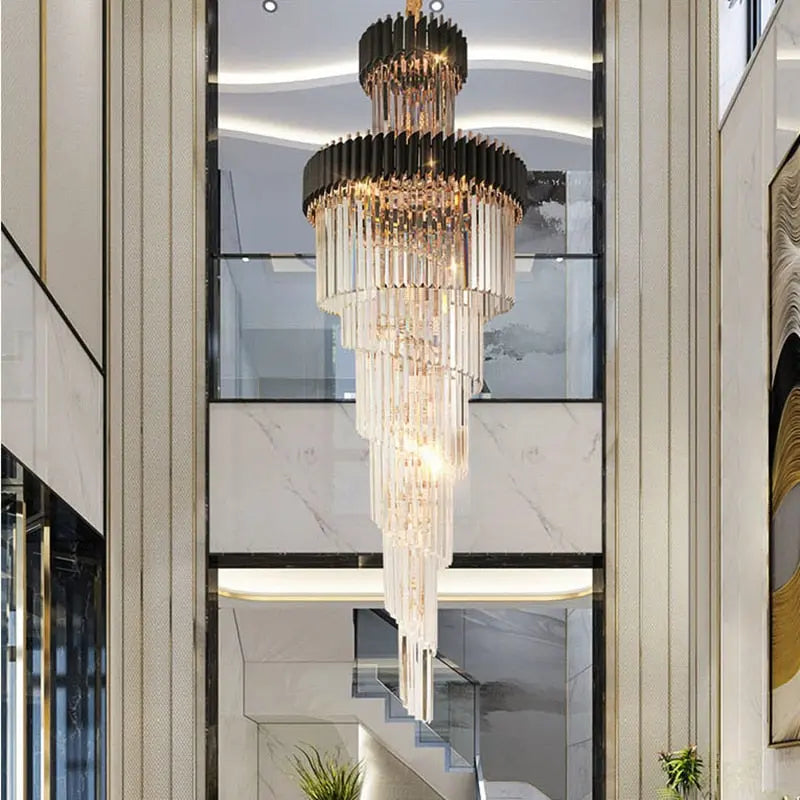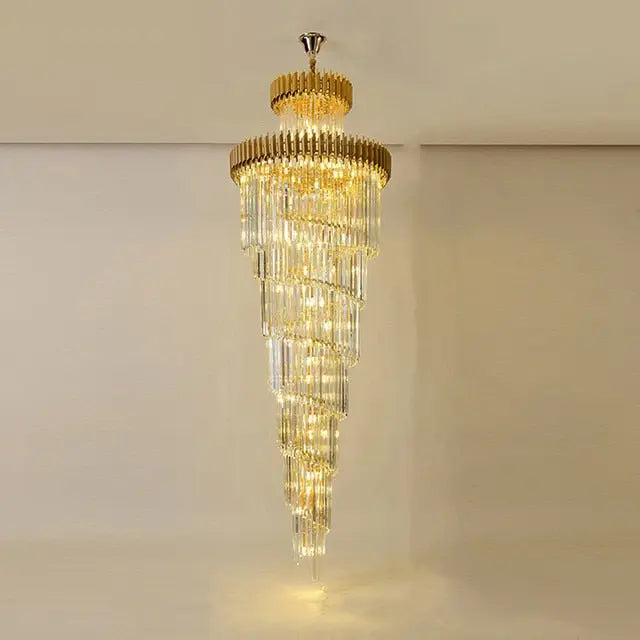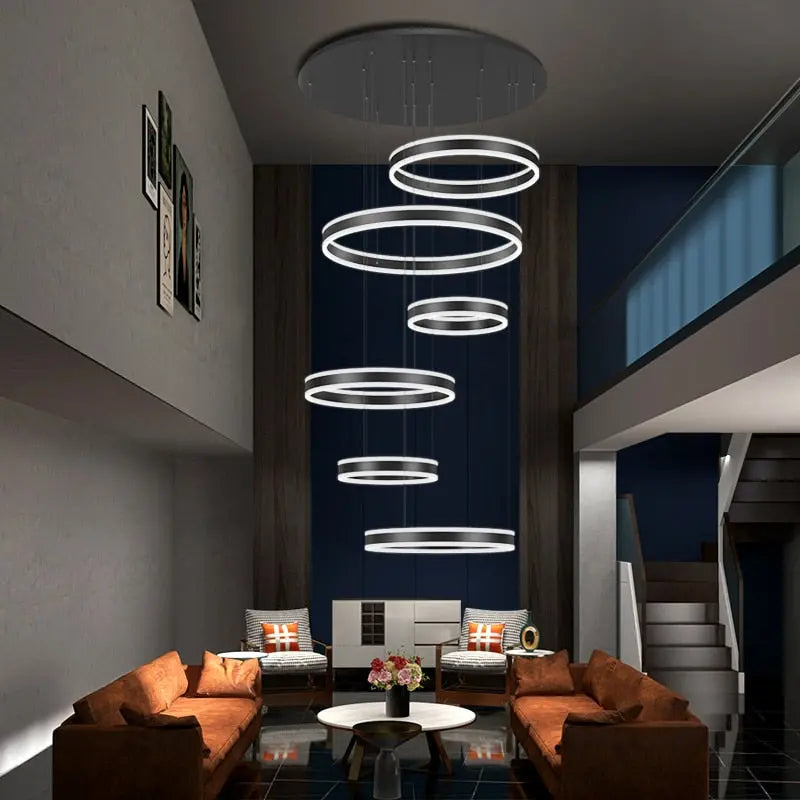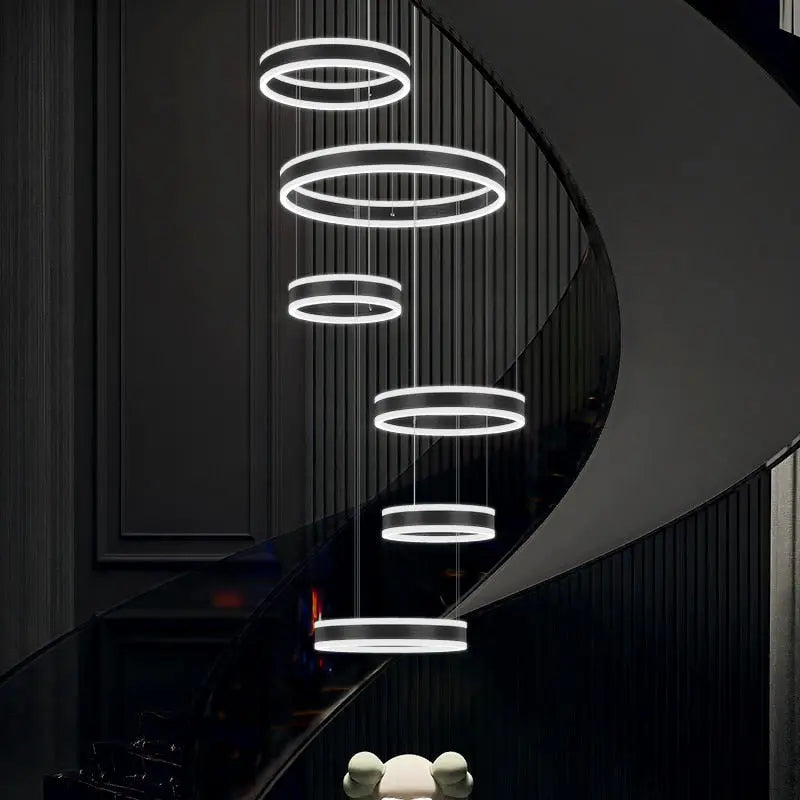PLANNING STAIRCASE LIGHTS THAT LOOK EFFORTLESS
Start by mapping the “void”—ceiling height, landing positions, and sightlines from both floors. In tall spaces, vertical compositions read best: a dedicated piece from our staircase chandeliers range anchors the volume without blocking views. For quick math on overall length and clearances, see the step-by-step staircase size guide.
Scale & drop: Keep comfortable headroom at landings (about 7–8 ft). Align the bottom tier slightly below the upper railing for balanced proportions, and stagger elements 6–12 in apart so the form feels intentional while you move up and down the stairs.
Style choices: If you want organic movement, explore adjustable-arm looks in branch chandeliers. Prefer a softer glow? Multi-orb clusters from bubble chandeliers diffuse brightness for a calm, cloud-like effect. Choose finishes that echo nearby hardware so the composition ties into the entry and second-floor hall.
Install & care: Sloped ceilings often need a wide canopy or multi-point anchors to keep weight distributed and lines vertical. Confirm driver type (TRIAC/ELV/0–10V) for smooth dimming, and plan safe access—winch/lift systems or quick-connects make cleaning far easier in two-story spaces.
Quick guidelines
- 12–16 ft ceilings: compact tiered frames or 10–18-light clusters feel proportional.
- 18–22 ft ceilings: larger multi-drop sets (18–30 lights) or tall linears fill volume without glare.
- Traffic flow: avoid placing the lowest tier in the main walking arc; shift the cluster slightly toward the open void.
Need help confirming drop length, canopy width, or dimmer compatibility? Our team can review your measurements and recommend options that fit.


